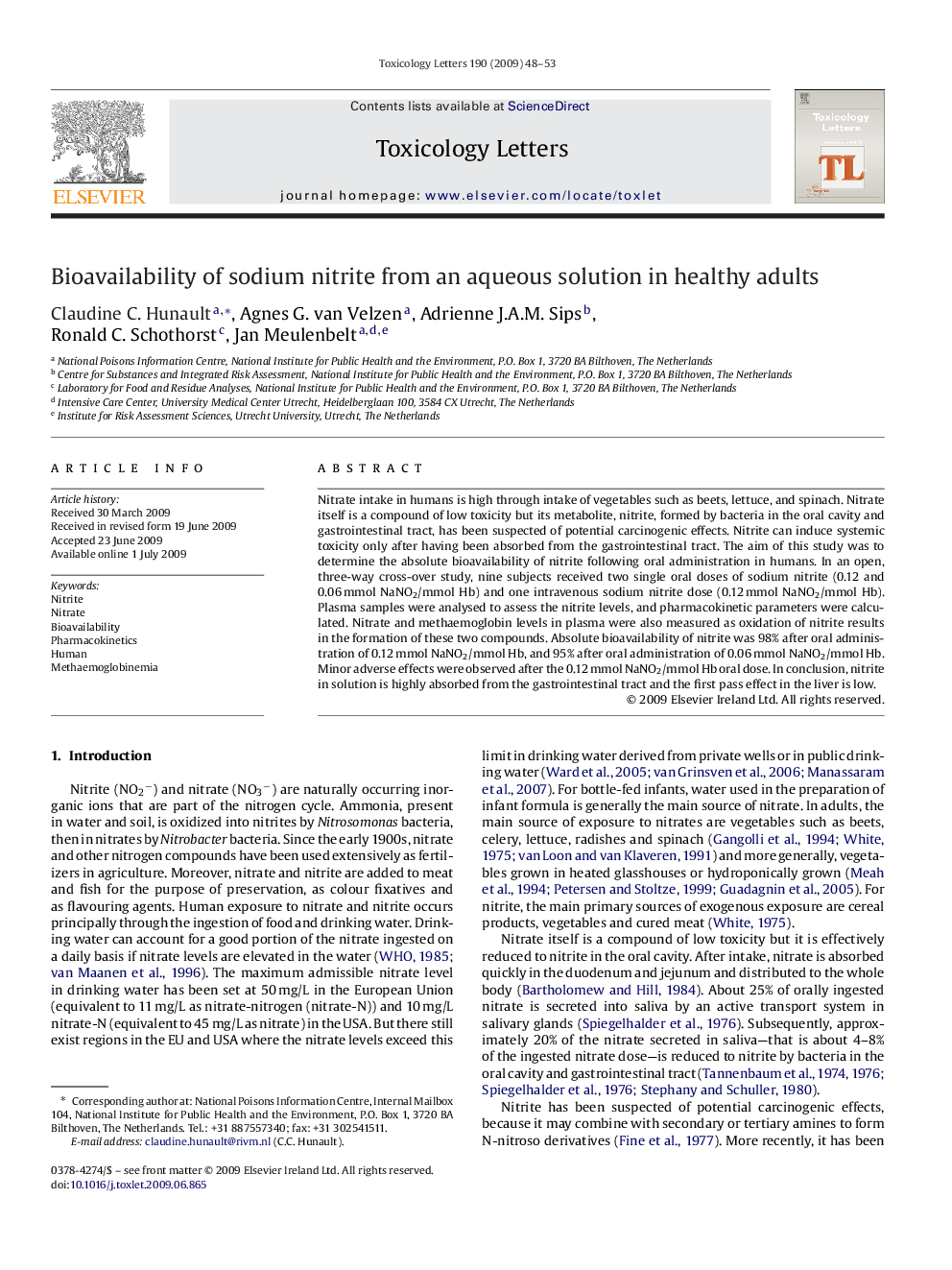| Article ID | Journal | Published Year | Pages | File Type |
|---|---|---|---|---|
| 2601038 | Toxicology Letters | 2009 | 6 Pages |
Nitrate intake in humans is high through intake of vegetables such as beets, lettuce, and spinach. Nitrate itself is a compound of low toxicity but its metabolite, nitrite, formed by bacteria in the oral cavity and gastrointestinal tract, has been suspected of potential carcinogenic effects. Nitrite can induce systemic toxicity only after having been absorbed from the gastrointestinal tract. The aim of this study was to determine the absolute bioavailability of nitrite following oral administration in humans. In an open, three-way cross-over study, nine subjects received two single oral doses of sodium nitrite (0.12 and 0.06 mmol NaNO2/mmol Hb) and one intravenous sodium nitrite dose (0.12 mmol NaNO2/mmol Hb). Plasma samples were analysed to assess the nitrite levels, and pharmacokinetic parameters were calculated. Nitrate and methaemoglobin levels in plasma were also measured as oxidation of nitrite results in the formation of these two compounds. Absolute bioavailability of nitrite was 98% after oral administration of 0.12 mmol NaNO2/mmol Hb, and 95% after oral administration of 0.06 mmol NaNO2/mmol Hb. Minor adverse effects were observed after the 0.12 mmol NaNO2/mmol Hb oral dose. In conclusion, nitrite in solution is highly absorbed from the gastrointestinal tract and the first pass effect in the liver is low.
